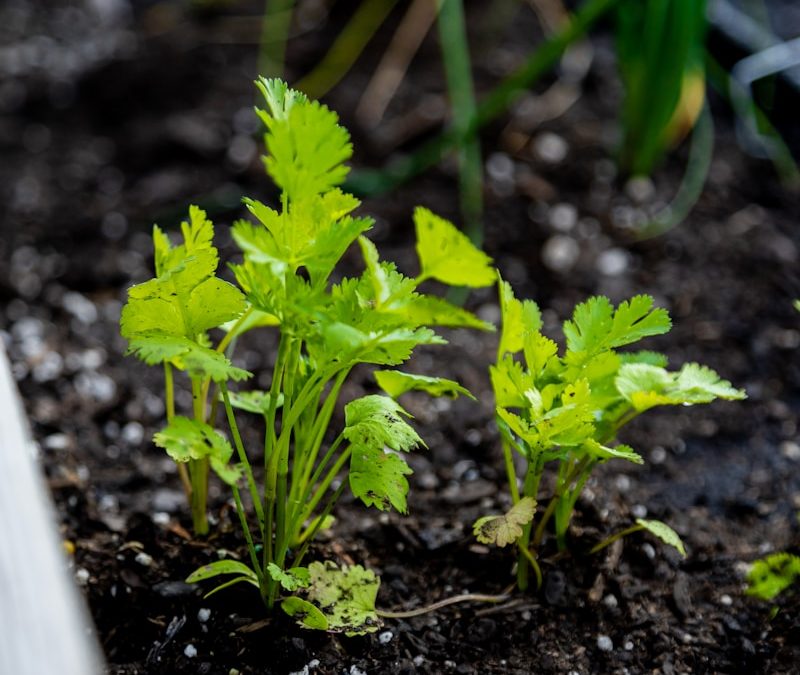Contents
- 1 How to Grow Cilantro Indoors Successfully (Beginner-Friendly Guide)
- 2 Why Grow Cilantro Indoors?
- 3 Best Cilantro Varieties for Indoor Growing
- 4 What You Need to Grow Cilantro Indoors
- 5 Step-by-Step: Growing Cilantro from Seed Indoors
- 6 Common Indoor Cilantro Growing Problems
- 7 Harvesting & Using Your Cilantro
- 8 Final Thoughts on Growing Cilantro Indoors
How to Grow Cilantro Indoors Successfully (Beginner-Friendly Guide)
Growing cilantro indoors can be a rewarding experience—nothing beats fresh, fragrant herbs at your fingertips. Whether you’re short on garden space or just want to keep your herbs close in the kitchen, cilantro is a fantastic herb to grow indoors year-round. With the right setup and care, you can enjoy a steady supply of this popular herb, perfect for salsas, curries, and more.
Why Grow Cilantro Indoors?
- Year-round access to fresh herbs
- Control over growing conditions (light, temperature, and water)
- Fewer pest and disease problems than outdoors
- Adds greenery and fragrance to your kitchen or living space
Cilantro (also known as coriander) is loved for its fresh, citrusy flavor. It’s an essential ingredient in Mexican, Indian, and Thai cuisine. However, it’s also a fast-growing, short-lived herb, which makes proper care especially important.
Best Cilantro Varieties for Indoor Growing
Choose slow-bolting or compact varieties for best indoor results:
- Calypso – Slow to bolt, ideal for containers
- Santo – Fast-growing and flavorful
- Cruiser – High yield with strong stems
What You Need to Grow Cilantro Indoors
1. Container
- Use a pot at least 8 inches deep with good drainage holes
- Terracotta or fabric pots work well
2. Potting Mix
- Use a light, well-draining potting mix
- Avoid garden soil—it’s too heavy for indoor use
3. Light
- Needs 4–6 hours of direct sunlight per day
- Supplement with grow lights during winter or in low-light rooms
Try this full-spectrum LED grow light on Amazon
4. Watering
- Keep the soil evenly moist, not soggy
- Water when the top inch feels dry
5. Temperature & Humidity
- Thrives between 18–24°C (65–75°F)
- Avoid placing it near heaters or cold windowsills
6. Fertilizer
- Feed with a diluted liquid herb fertilizer every 2 weeks. Check out this organic herb fertilizer on Amazon
Step-by-Step: Growing Cilantro from Seed Indoors
- Soak Seeds: Soak for 12–24 hours to improve germination
- Sow Seeds: Scatter in pot and cover lightly with soil
- Water Gently: Mist or lightly water the surface
- Cover: Use plastic wrap or a humidity dome until sprouted
- Thin Seedlings: Leave 3–4 inches between plants
- Provide Light: Move to sunny window or under grow light
- Feed and Harvest: Begin feeding after 3 weeks and harvest when 6–8 inches tall
Common Indoor Cilantro Growing Problems
- Leggy seedlings: Not enough light—move closer to light source
- Yellow leaves: Overwatering or poor drainage
- Bolting (flowering early): Too much heat or light stress
- Pests: Rare indoors, but watch for aphids or fungus gnats
Harvesting & Using Your Cilantro
- Start cutting leaves when they’re 4–6 inches tall
- Harvest outer leaves first and allow inner growth to continue
- Store fresh leaves in a damp paper towel in the fridge
Tip: Let some plants flower if you want to collect coriander seeds!
Final Thoughts on Growing Cilantro Indoors
Indoor cilantro is fast, fragrant, and fun to grow—even if you’ve never gardened before. Start with a well-lit space, good potting mix, and a little patience. With just a small container and a sunny spot, you’ll be garnishing your dishes with homegrown herbs in no time.
If you’re interested in learning how to grow other herbs indoors, such as basil or parsley, be sure to check out our other herb-growing guides.
Related Articles
- How to Grow Basil Indoors All Year Round
- How to Use a Soil Moisture Meter for Indoor Plants
- Cultivating a Low-Maintenance Indoor Herb Garden
Outbound Link
For more growing tips, visit Gardening Know How’s Cilantro Guide

